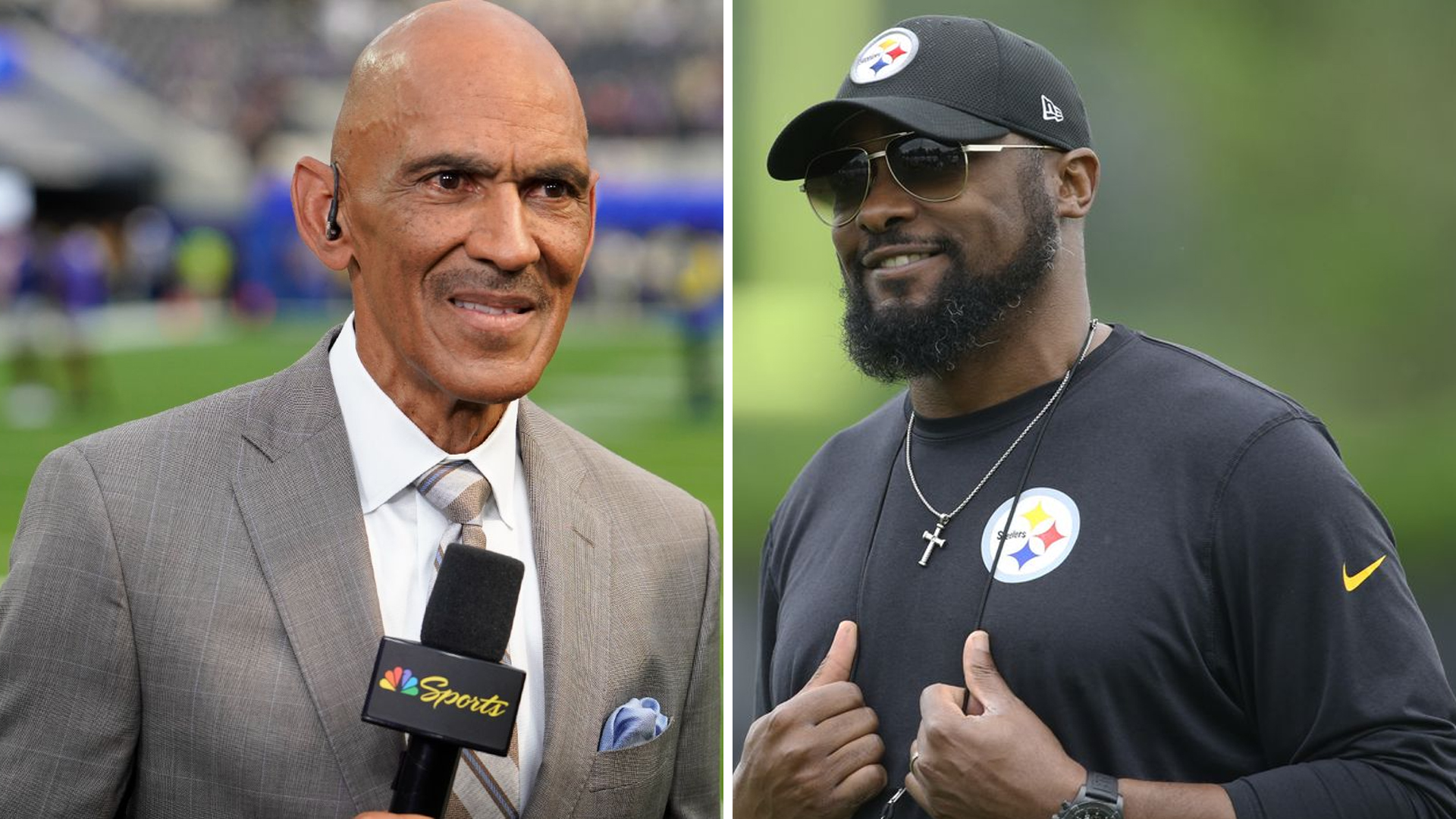In the ever-evolving world of professional football, where fierce competitions aren’t limited to just the playing field, a new debate has arisen. This time, it revolves around players kneeling during the national anthem and the stance that coaches are taking on this matter. Mike Tomlin, the esteemed head coach of the Pittsburgh Steelers, has made headlines with his bold declaration against players taking a knee. But what has truly fueled the fire is the support Tomlin received from Tony Dungy, one of the most respected figures in the NFL.
Before diving into the crux of the matter, it’s important to understand the weight that Tony Dungy’s words carry. Dungy, a Hall of Famer, is celebrated not just for his coaching acumen, but also for his leadership, integrity, and values. He was the first African American coach to win a Super Bowl, and his career has been punctuated by grace and poise, both on and off the field. Dungy’s perspective on issues transcends the sport itself, often landing him in broader societal and cultural conversations.
Kneeling during the national anthem began in 2016 when Colin Kaepernick, the then San Francisco 49ers quarterback, took a knee to protest racial inequality and police brutality. The gesture was symbolic, a peaceful act of resistance against systemic issues in America. Since then, the act of kneeling has taken on a life of its own, polarizing opinions and creating rifts even within teams.
Enter Mike Tomlin, whose recent statement essentially warned players against kneeling, hinting at potential consequences, including possible termination. This, in a league that boasts a significant number of African American players, naturally became a lightning rod for controversy.
Tony Dungy’s support for Tomlin’s stance surprised many. Here’s what Dungy had to say:
“I’ve always believed that the football field isn’t the place for political statements. It’s a place for football. I understand and respect the reasons behind the protest, but we need to find other ways to make our voices heard. Mike’s decision is in line with keeping the focus on the game.”
Dungy’s position provides a nuanced perspective. While he acknowledges the gravity of the issues players are protesting, he aligns with the belief that the football field should remain neutral – a place where players come together for the love of the game.
Tony Dungy’s support for Mike Tomlin has further intensified the debate. Many fans, particularly those who believe that sports should remain apolitical, have lauded both Dungy and Tomlin for their stance. They argue that the football field should be a unifying space, free from external controversies.
On the other hand, critics argue that Dungy, given his influence, missed an opportunity to support players’ rights to protest. For them, the act of kneeling is more than just a protest—it’s a plea for recognition, a call to address deeply embedded societal issues.
The African American community, which holds Dungy in high regard, seems to be split on the matter. Some see his point, while others feel betrayed, believing that the platform of the NFL is precisely the place to draw attention to racial inequality.
The conversation doesn’t end with just Dungy and Tomlin. The ripple effect of their combined stance is compelling other coaches, players, and even team owners to clarify their positions on the matter. This is reshaping team dynamics and the very essence of the NFL’s relationship with its players and fans.
Moreover, this controversy underscores a larger debate about the intersection of sports, politics, and societal issues. Can sports remain an isolated domain, untouched by the tumult of societal unrest? Or is it, given its massive viewership, the perfect platform for raising awareness?
The support Tony Dungy extended to Mike Tomlin adds another layer to an already complex issue. Both coaches, with their illustrious careers and impactful legacies, hold considerable sway in the NFL community. Their stance on kneeling during the national anthem, regardless of personal opinions, pushes us to reconsider the role of sports in societal dialogues.
In a world where lines between domains are increasingly blurring, the coming seasons will reveal how the NFL, its players, coaches, and fans navigate this intricate web of sportsmanship, patriotism, and activism. Whatever the outcome, Dungy and Tomlin have ensured that the conversation continues, prompting introspection on what it truly means to take a stand, or in this case, a knee.

